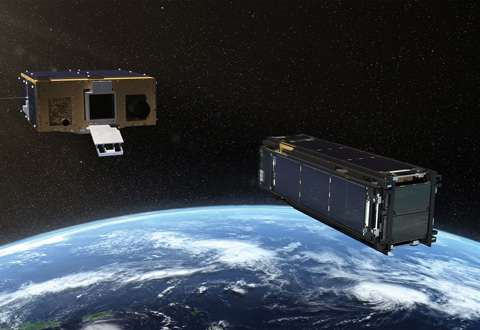Sending Tiny Satellites into Big Space
By: Steven Norris | Categories: Alumni Achievements

Our future in space looks small—really small. This summer, years of planning, design and testing paid off for hundreds of Georgia Tech students and young alumni who made up the brain trust behind the latest Tech-built satellite sent to space. Prox-1 measures about the size of a suitcase, weighs 154 pounds and is extremely delicate. It was part of the payload aboard the third launch of the SpaceX Falcon Heavy—the world’s most powerful operational rocket. Prox-1’s mission was to deploy LightSail, a solar sailing satellite developed by the Planetary Society. Grayson Huggins, AE 19, had just graduated but was part of the student team that built and tested Prox-1. “It is really one of my proudest achievements in my life, and it’s something nobody can ever take away from me,” said Huggins, who interned at NASA’s Jet Propulsion Laboratory this summer. “Something I built is in space, and that’s amazing to be able to say at 22 years old.”
But this wasn’t Tech’s first nanosatellite rodeo. Two cubesats developed by students and researchers for the RANGE Project were successfully launched into orbit in December 2018 on board the SpaceX Falcon-9. And more nanosatellite projects are on the horizon.


